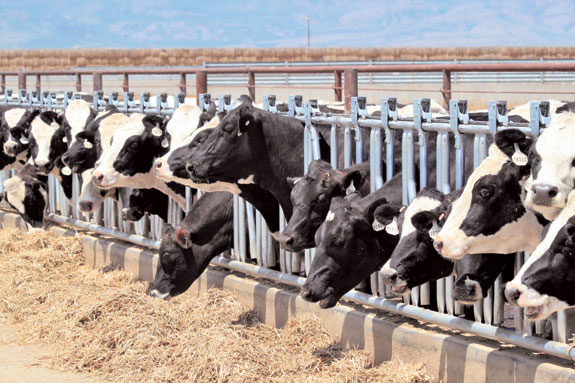With feed costs representing approximately 50 percent of the cost to produce milk, some dairy managers have seized the opportunity and implemented various measures of evaluating profitability.
As expected, lots of changes are happening in rations as producers, nutritionists and formulators attempt to keep prices as low as possible.
A key measure when evaluating feeding changes is the impact on profitability. Some measurements used include feed cost per cow per day, feed cost per kilogram of dry matter, feed cost per 45 kilograms of milk, income over feed costs, marginal milk response and cost per unit of nutrient – each tool with its own advantages and disadvantages.
Feed efficiency, defined as kilograms of fat-corrected or energy-corrected milk produced per kilogram of dry matter intake consumed or, more simply but less accurately considered, kilogram of milk per kilogram of dry matter intake, can be measured on farm.
Tools like computer software programs, spreadsheets using detailed measurements and herd data, tracking actual feed intake through automated feed systems or calculating an adjusted feed efficiency with a simplified approach can be used.
Feed efficiency can be affected by many factors, some of which include changes in maintenance requirements, feed digestibility, dry matter intake, sick cows, days in milk and limiting nutrients.
Creating a benchmark for your herd is critical to evaluating and improving feed efficiencies.
Feed efficiency, although not historically a common standard for monitoring profitability in the dairy industry, is gaining momentum as a tool. Escalating production, increased demands on the lactating cow, rising feed costs and environmental pressures are all contributing factors in the focus on feed efficiency.
Pulling ingredients at the risk of losing milk and affecting long-term productivity, should be reconsidered and exchanging or adding ingredients can help producers maintain and improve productivity with fewer, more efficient cows.
Many ingredients or nutrients, such as trace minerals, fat-soluble vitamins A, D and E and B vitamins, such as choline, folic acid and B12, are essential nutrients that have an impact on overall metabolism and feed efficiency.
This is the case even if they are required in very small quantities. The majority of the expenses represent the macro-nutrients, high-quality forages, cereals, proteins and fat supplements.
This represents more than 90 percent of the total investment per cow per day in a high-producing cow.
The micro-minerals, vitamins A, D and E and B vitamins are required to assure the macro-nutrients, produced in the rumen and later absorbed post-ruminally, are well metabolized in each key organ including the liver, mammary gland and uterus.
They play a vital role in making nutrients available for hoof health, mammary gland production and efficient reproduction. These micro-nutrients will always play a role post-ruminally and become even more important under situations of stress and high temperature – and will optimize nutrient use during feed changes.
Current research has emerged to support B vitamins as important nutrients to consider. Collaborative university research and commercial dairy farm research on individual and combined B vitamins has shown an increase in metabolic efficiency.
B vitamins are required as co-factors in numerous metabolic cycles. B vitamin supplementation research, initially in non-ruminant species, suggested improvements in growth are associated with improved feed efficiency rather than increased DM intake.
University of California – Davis researchers indicated a clear general increase in lactational performance in the absence of a change in DM intake after supplementing a combination B vitamin product.
Subsequent research indicated a reduction of DM intake with no impact on yield of milk or milk components through 180 DIM.
Researchers reported that the utilization of combined B vitamins increased and metabolic efficiency improved in early lactation cows.
And most recently, after the participation of 15 commercial dairy herds used in this study, it was reported that supplementary B vitamins lessened the negative energy balance in early lactation as a result of improved energy metabolism.
Price per metric ton of feed is the daunting value producers recognize with increasing ingredient costs. A jump in feed price causes producers to act quickly in trying to lower that number.
The important factor to consider is that by increasing your feed efficiency you will reduce the cost of feeding. Researchers found that the inclusion of the B vitamin combination product improved energetic efficiency by 2 to 3 percent.
That improvement can then be considered to reduce the cost of feeding by 2 to 3 percent. If the average cost is $8 per cow per day, then you would save $0.16 to $0.24 per cow per day.
This value should meet or exceed the ingredient price and additional responses to the product with an economic impact should be considered.
Feed efficiency values can be established for your farm to reflect productivity. Once a benchmark is established, changes in feed, management and environment can be evaluated economically. PD
References omitted due to space but are available upon request. Click here to email an editor.

- Angela Lipka
- Canadian Ruminant Product Manager
- Jefo Nutrition Inc.









